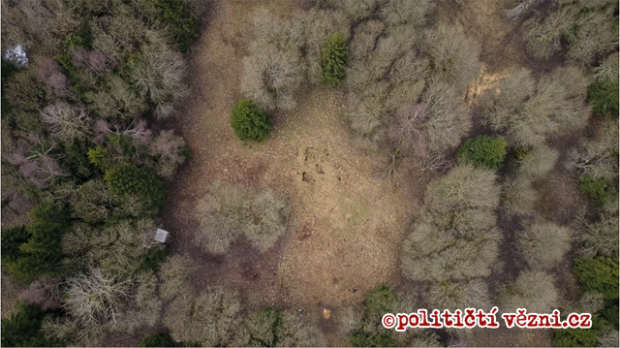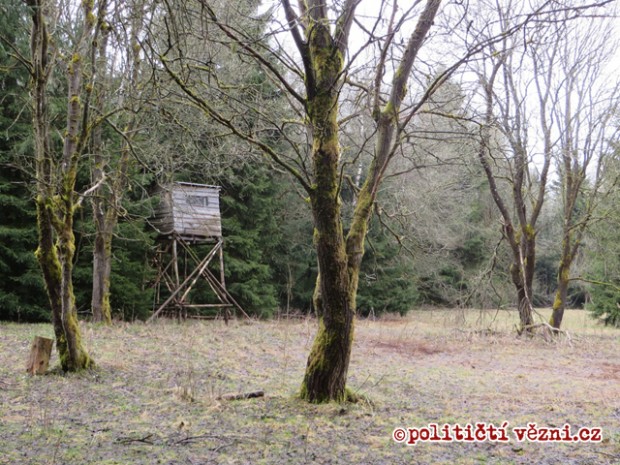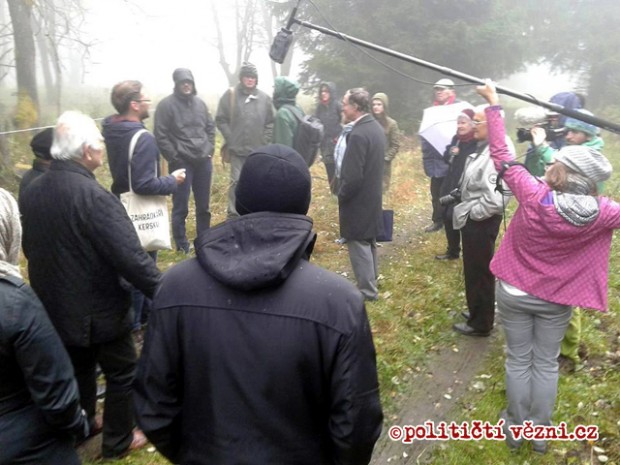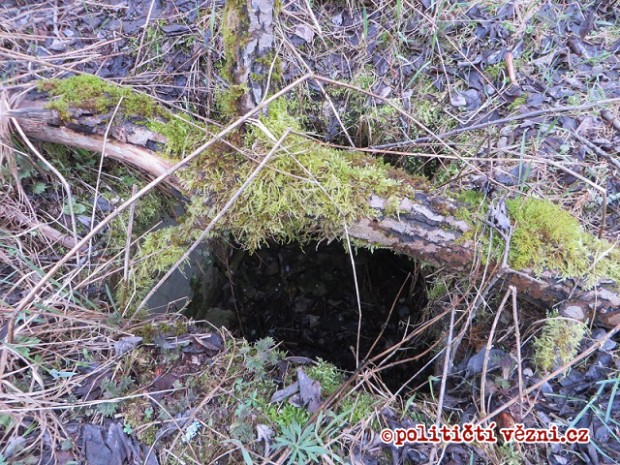Nikolaj Camp (codename A)
he Nikolaj Camp was one of the 18 prisoner labour camps operated by the Czechoslovak communist regime in the uranium mines of the Jáchymov, Horní Slavkov and Příbram regions.[1] It was established in 1951 on the site of a former forced labour camp and shut down in 1958. Nikolaj, with a capacity of almost one thousand prisoners, was infamous for its brutal regime. In the early years, political prisoners represented a very small minority of its inmates and were often subject to open violence by the warders and other prisoners. Eventually, political prisoners started outnumbering the other convicts and managed to secure somewhat better living conditions.
Highlights from a commented tour of Nikolaj Camp:
Several famous people were interred in the Nikolaj Camp, including the ice hockey world champion Augustin Bubník, Brigadier General Antonín Husník, paratrooper Rudolf Pernický, the writers Karel Pecka and Oldřich Klobas, priest Jakub Antonín Zemek, diplomat Václav Vaško, boy scout Miroslav Kopt and Arnošt Schwarzenberg.
After the camp had been disbanded, most visible traces of its existence disappeared. The camp was razed to the ground and the meadow that remained was eventually overgrown by trees. In 2000, an information panel of the Hell of Jáchymov Educational Trail was installed on the site (renewed by our association in 2015). Members of our group have been visiting the former site of the Nikolaj Camp for many years. For a long time, we believed it was completely gone and that nothing was left but a handful of small traces (such as a concrete kerb on the site of the communal culture house).
We changed our opinion in April 2016 when we visited Nikolaj with the former political prisoner Anton Tomík who took part in the mass escape from the camp through a tunnel in 1955.[2] Together with his son, Anton Tomík jr., we were surprised to discover that many remains of the camp were in fact hidden underground and could still be located. After studying historical aerial photographs taken by the military, Anton Tomík jr. was able to identify the foundations of the prison barracks and the locations of the gate and the free-fire zone.
Following this success, we decided to dedicate more efforts to the identification of the remains of the Nikolaj Camp. In 2016, this project received support from the Avast Foundation, for which we are extremely grateful. We returned to Nikolaj several times over the course of last year; we obtained more historical pictures, took footage of the site with a drone and are now together with our colleagues from the Jan Evangelista Purkyně University in Ústí nad Labem involved in the creation of a 3D model of the camp.
In October 2016, we installed a land art piece on the site and organised a commented tour for participants of the historical conference “Jáchymov in the 20th century – a place of remembrance in European history”. You can learn more about the results of our efforts in this article.
And finally, let us add that on the website Političtí vězni.cz, we have published the translated life stories of three political prisoners who had personal experience with Nikolaj: Augustin Bubník, Zdeněk Kovařík and Jozef Kycka.
[1] The designation of the camps changed several times over the years. In 1949–1950, they were known as Convict Labour Camps (trestanecké pracovní tábory, TPT); in 1951–1955 they were identified mainly as Prisoner Labour Units (pracovní útvary vězňů, PÚV) and for the longest period in 1955–1961 as Correctional Labour Camps (nápravně pracovní tábory, NPT). Historians often refer to them as “camps for an incarcerated workforce” while former political prisoners usually call them concentration camps. For more information, see BURSÍK, Tomáš. Přišli jsme na svět proto, aby nás pronásledovali: trestanecké pracovní tábory při uranových dolech v letech 1949–1961. Prague: Ústav pro studium totalitních režimů, 2009. p. 7.
[2] For more information, see HORNÍK, Jan. Útěk tunelem z lágru Nikolaj. Paměť a dějiny [online]. 2015, 8(3), 91-97 [retrieved 2017-07-12]. Available at: https://www.ustrcr.cz/data/pdf/pamet-dejiny/pad1503/091-102.pdf
Evolution of the Nikolaj Camp
Uranium mining in the Jáchymov region was started by Nazi Germany in World War II and involved many prisoners of war. After the war, the mining efforts continued, but this time under supervision of the Soviets; the uranium was intended for the Soviet Union’s nuclear programme. Early on, the Soviets used the labour of thousands of German POWs. After 1948, the regime attempted to replace this workforce with civilian miners, but failed in its efforts; this proved problematic, because the primitive mining methods used by the Soviets combined with a low productivity required a significant increase in the number of workers. Already in 1949, the regime started deploying prisoners to the mines, and their numbers expanded very rapidly.
(Pokračování článku)Selected remains of the Nikolaj camp
Former forced labour camp Nikolaj can be found about two kilometres north of upper Jáchymov. It lies 935 metres above sea level. Today, it’s on the yellow marked tourist trail that is shared with the Hell of Jáchymov Educational Trail. There is an informational panel on the side of the former driveway leading to the camp.
(Pokračování článku)




